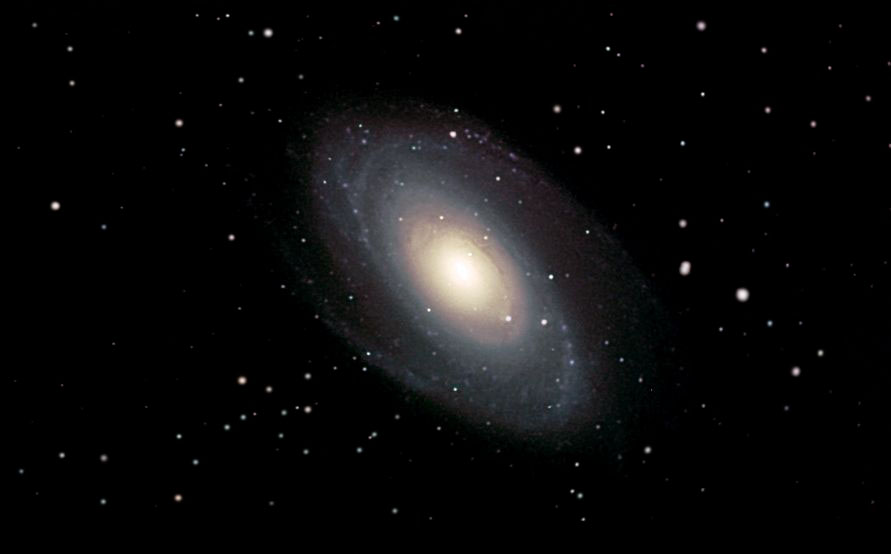
M81 was discovered by J.E. Bode at Berlin in December 1774, who described it as a nebulous patch. At the time, objects like M81 were thought to be solar systems like ours in the process of formation. The object became known as Bode's Nebula. Messier added it to his catalog in February 1781. It is an exceptionally fine example of a large symetrical Sb-type spiral galaxy, and can be viewed in 20x70 binoculars under dark skies. The galaxy is relatively bright, and shines at about magnitude 8.
M81 forms an exceptional pair with M82 which is visible in small telescopes. Bode's Galaxy is gravitationally bound with M82. Those two galaxies form the center of a small group of galaxies which are the closest group of galaxies to our Local Group. Other members of the group include NGC 3077, NGC 2976, NGC 2366, and IC 2576. M81 is one of the densest galaxies known, with about twice the density of M31. M81 spans about 70,000 light-years, and is slightly smaller than our Milky Way Galaxy. M81 is 11.6 million light-years away. It is moving away from us at a speed of about 48 miles per second. M81 has a central black hole with a mass equal to 70 million times the mass of our sun.
This is a composite RGB CCD image taken at prime focus on a Takahashi Epsilon 250 telescope at f3.4 using an ST-8E CCD carried on an NJP mount.
M81 (NGC 3031)
Constellation: Ursa Major
RA: 09h 55m 44.5s Dec: +69d 03' 06"
October 6, 2002
Image by Sid Leach
Dark sky site near Phoenix, Arizona
Recent Images.
Complete list of images.
Description of equipment used to acquire images.
Home
Feedback and comments should go to Sid